Whitby was our home base for four days of fossiling along the north Yorkshire coast. It is a quaint town with all the comforts of home.
The coast of north Yorkshire surrounding Whitby is a mecca for Jurassic marine fossils.
Virtually any section of the coast from Staithes to Ravenscar will offer up a bounty of ammonites and other wonderfully preserved fossils.
This website ---> The UK Fossils Network contains a wealth of information on each of the access points along the coast.
It would be pointless to duplicate the monumental effort that has gone into this guide to the UK.
I applaud them and thank them for the guidance they provided.

Whitby from Sands End
The Abbey is on the left on top of the cliff. The faces along the beach are non-fossiliferous.
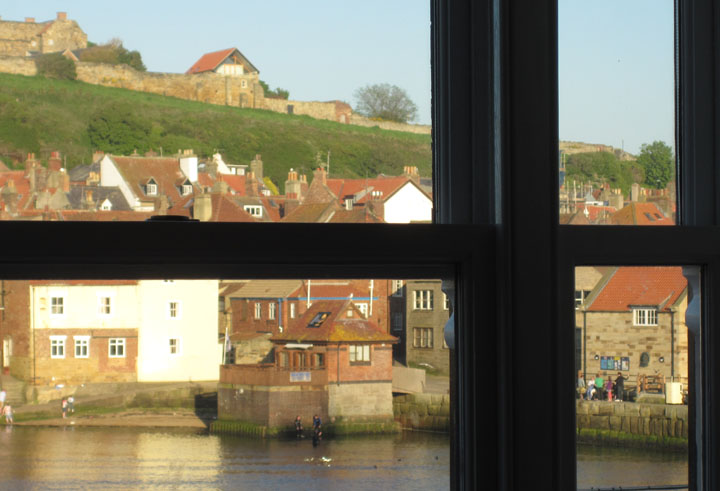
We stayed in a holiday cottage right on the harbor at the lifeboat dock, called the
"Boathouse", which we come to discover is the former sewage pumping station! It has been nicely redone.

View of the town from the lifeboat dock.

View of the harbor, mouth of the River Esk.
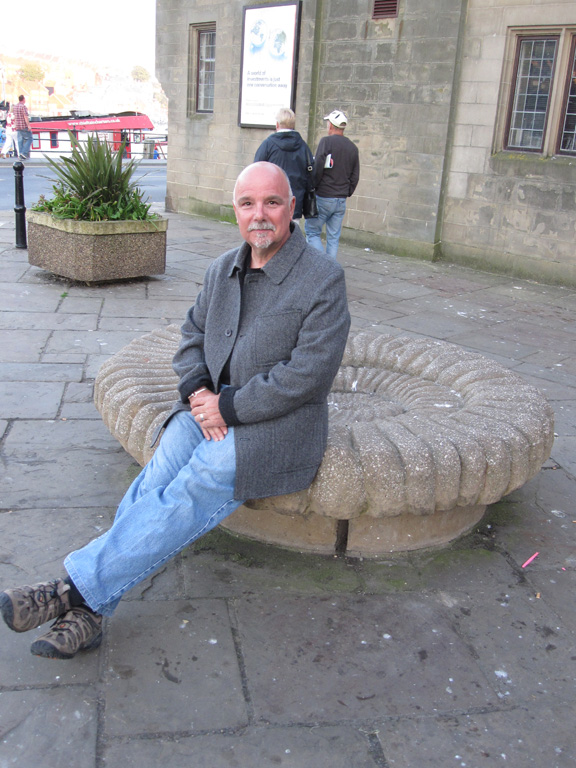
Similar to Lyme Regis but to a lesser extent, Whitby takes advantage of its notoriety as a fossiling location.
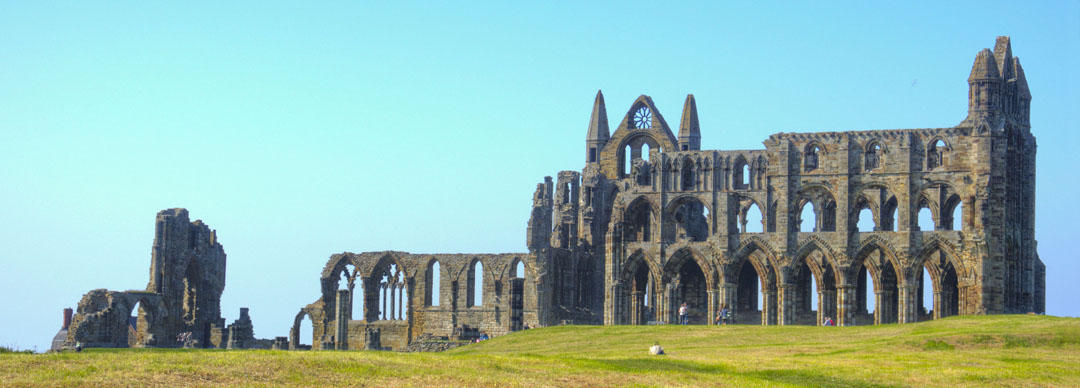
The ruins of the 13th century abbey and the Dracula connection are a big draw for tourism in Whitby,
as is the trade in jewelry fashioned from "Whitby Jet", the fossilized remains of the Monkey Puzzle tree.

Natural Wonders is the storefront for Byron Blessed. He finished a nodule that I found at Runswick Bay for me in record time! Nice people!

We made a pub crawl one night, the Station was our favorite.
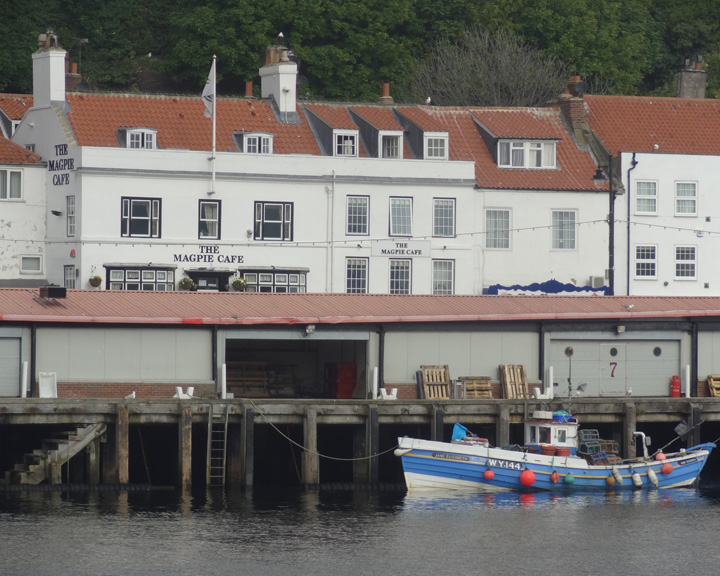
Our favorite restaurant is the Magpie Cafe. Noted for their fish'n chips, we expected a touristy place
where most patrons are seen only once.

To our delight, the food was top shelf and the service par excellent!
Then again, we were talking about fossils...
A few comments, though on the entire Yorkshire coast...
Item #1: Cliffs
Each of these localities is along steep, unstable and rapidly eroding cliffs.
It is NOT necessary to dig or otherwise search in the cliff faces.
Everything we found with one exception was in the rubble on the beach or scree at the base of the cliffs.
It is not just a cliche, it is the truth.
Item #2: Tides
The tides are your friend and foe.
If not for the action of the sea, the fossils would not be washed out of the cliffs onto the shore.
However, during high tides, the sea may cover the beaches and make access to the rockier areas dangerous and impassable.
Pay attention to the tides.
Item #3: Nodules
The better preserved ammonite fossils are contained in hard rounded nodules.
Train your eyes to look for the dull grey muddy looking grey nodules, usually spherical or ovate in shape.
They drop out of the cliffs and the sea tosses them about, wearing off the outer edges of matrix, exposing the ammonites within.
Observing the color and texture of the sea-worn nodules will provide a guidepost for finding fresher ones as
the freshest ones will not likely show any signs of what is within.
The harder, speckley grey nodules did seem to have much in them. They have a funny smell when you smack them with the hammer.
In Whitby proper, fossils are found in the cliffs and on the shore to
the east of the harbor mouth. The cliffs below the abbey are a bit treacherous due to the steepness and
unstable conditions. Collecting on the shore is restricted to low tide conditions only.
Saltwick Bay is a bit further to the east and can be reached from the harbor mouth during low tides.

I hunted twice in the cliffs below the abbey at the mouth of Whitby Harbor.
Access is simple, just follow the street along the waterfront and it takes you out to the breakwater and the base of the cliffs.
The base of the cliffs is accessible at any time by scrambling along the rip rap installed to inhibit the cliff erosion.
The fog can be thick as guts!

The cliffs are still quite unstable and it is risky to be that close.
Loose debris rains down regularly. It is the only place I hunted where I wished I had a hard hat!

The shale contains copious crushed ammonites, however they are too soft to collect.

Some appear quite nice but they are not fully preserved and will fall apart if you try to remove them.
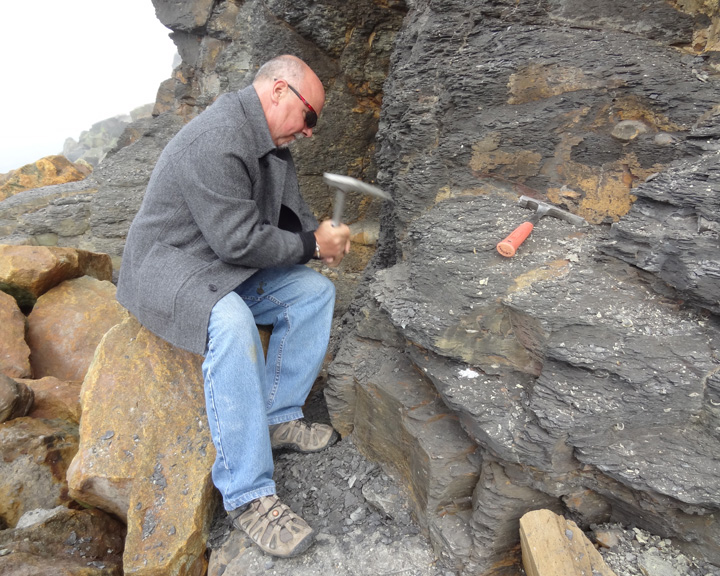
this I learned by going after one that appeared to be solid.

Alas, even when exposed, it crumbles when you try to remove it. Hence, my suggestion to leave them be.

I found an area where these pelecypods were prevalent. I did collect a handful of these from the cliff face.
A pocket knife was sufficient to dislodge them.

This is the display on our fossil wall, combining all of the Yorkshire localities.
All in all, we are quite pleased with the experience. The weather was beautiful. The coast is spectacular.
The fossils are amazing.
I have to thank my wife, Karin for discovering the opportunities that the Yorkshire coast has to offer.
My thanks AGAIN to the The UK Fossils Network for their hot tips!
Questions? E-Mail me: tngray@nautiloid.net
Other Sites